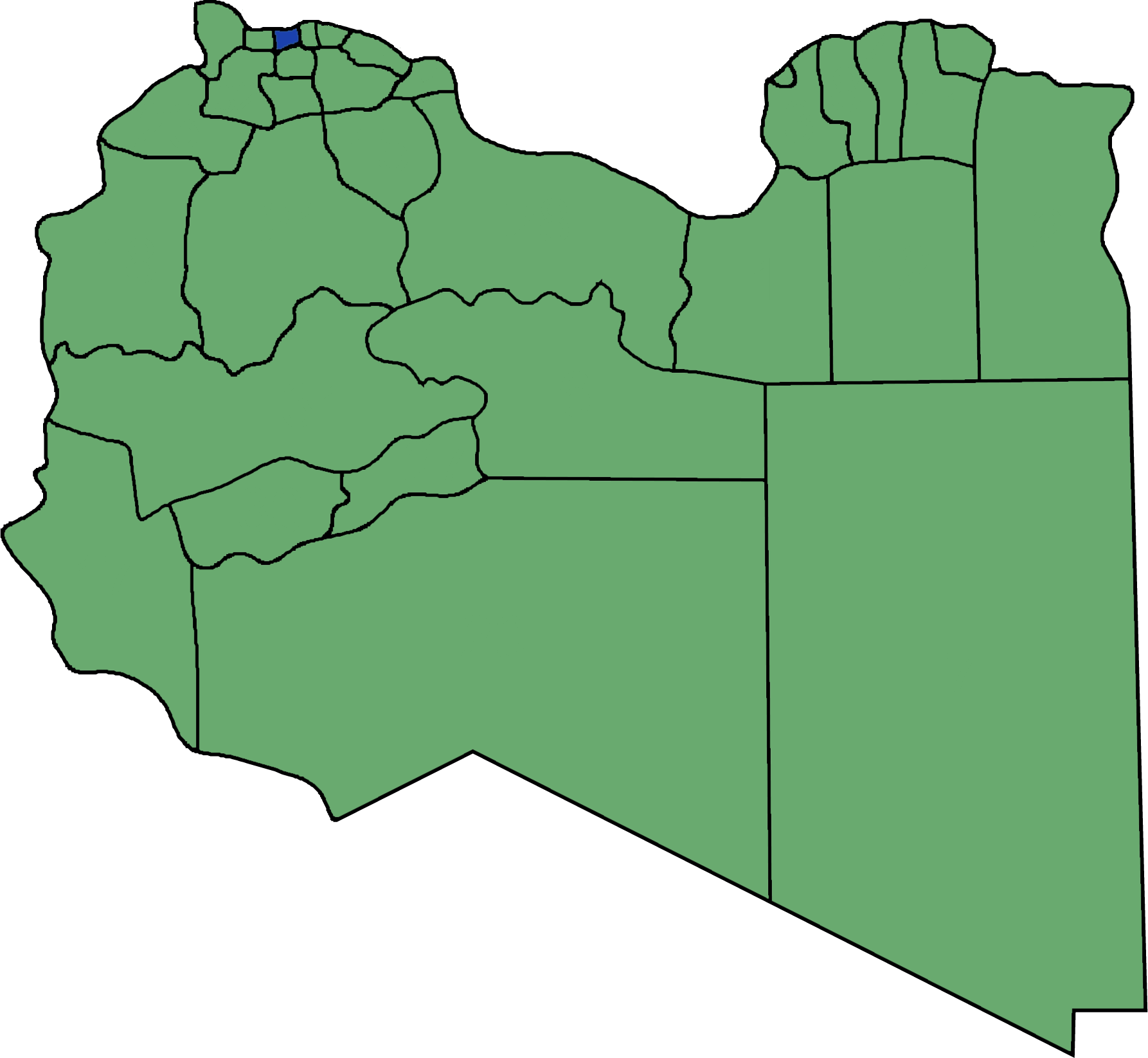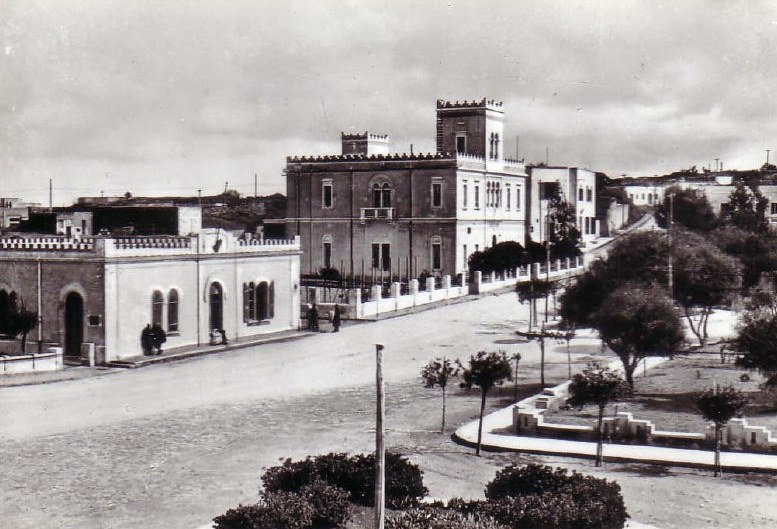|
Nuqat Al Khams
Nuqat al Khams ( ar, النقاط الخمس ''Nuqāṭ al Ḫams'') is one of the districts of Libya. It is in the northwest of the country, in what had been the historical region of Tripolitania. Its capital is Zuwara. Nuqat al Khams has a northern shoreline on the Mediterranean Sea. To the west, it borders the Medenine Governorate of Tunisia. Domestically, it borders the districts of Zawiya to the east, Jabal al Gharbi to the southeast, and Nalut to the southwest. Nuqat al Khams is a part of the Tripolitania geographical region of Libya. Per the census of 2012, the total population in the region was 157,747 with 150,353 Libyans. In total, there were 22,713 households in the district, with 20,907 households belonging to Libyans. The population density of the district was 1.86 persons per sq. km. The Al-Watiya Air Base is located here. Geography In the north, Nuqat al Khams has a shoreline on the Mediterranean Sea. To the west, it borders the Medenine Governorate of Tunisi ... [...More Info...] [...Related Items...] OR: [Wikipedia] [Google] [Baidu] |
Districts Of Libya
In Libya there are currently 106 districts, second level administrative subdivisions known in Arabic as ''baladiyat'' (singular ''baladiyah''). The number has varied since 2013 between 99 and 108. The first level administrative divisions in Libya are currently the governorates (''muhafazat''), which have yet to be formally deliniated, but which were originally tripartite as: Tripolitania in the northwest, Cyrenaica in the east, and Fezzan in the southwest; and later divided into ten governorates. Prior to 2013 there were twenty-two first level administrative subdivisions known by the term ''shabiyah'' (Arabic singular ''šaʿbiyya'', plural ''šaʿbiyyāt'') which constituted the districts of Libya. In the 1990s the shabiyat had replaced an older baladiyat system. Historically the area of Libya was considered three provinces (or states), Tripolitania in the northwest, Cyrenaica in the east, and Fezzan in the southwest. It was the conquest by Italy in the Italo-Turkish War ... [...More Info...] [...Related Items...] OR: [Wikipedia] [Google] [Baidu] |
Libya
Libya (; ar, ليبيا, Lībiyā), officially the State of Libya ( ar, دولة ليبيا, Dawlat Lībiyā), is a country in the Maghreb region in North Africa. It is bordered by the Mediterranean Sea to the north, Egypt to Egypt–Libya border, the east, Sudan to Libya–Sudan border, the southeast, Chad to Chad–Libya border, the south, Niger to Libya–Niger border, the southwest, Algeria to Algeria–Libya border, the west, and Tunisia to Libya–Tunisia border, the northwest. Libya is made of three historical regions: Tripolitania, Fezzan, and Cyrenaica. With an area of almost 700,000 square miles (1.8 million km2), it is the fourth-largest country in Africa and the Arab world, and the List of countries and outlying territories by total area, 16th-largest in the world. Libya has the List of countries by proven oil reserves, 10th-largest proven oil reserves in the world. The largest city and capital, Tripoli, Libya, Tripoli, is located in western Libya and contains over ... [...More Info...] [...Related Items...] OR: [Wikipedia] [Google] [Baidu] |
Zuwara
Zuwarah, or Zuwara or Zwara (Berber language: At Willul or Zwara, ) is a coastal Berber-speaking city in Libya. Zuwara or At Willul is famous for its beaches and seafood. It is situated west of Tripoli and from the Tunisian border. It is the capital of the Nuqat al Khams district. Its population speaks Zuwara Berber, a Zenati Berber language. Zuwarah consists of 49 districts. History The settlement was first mentioned by the traveller Abdallah al-Tijani in the years 1306-1309 as ''Zwara al-saghirah'' ("Little Zwarah"). In the Catalan Atlas (1375) it was called as Punta dar Zoyara. The town is mentioned by Leo Africanus in the 16th century. It later served as the western outpost of Italian Libya (1912–43), being the terminus of the now-defunct Italian Libya Railway from Tripoli to the east. Its artificial harbour shelters a motorized fishing fleet. Cereals, dates, and esparto grass (used to make cordage, shoes, and paper) are local products. It was in 1973 in Zuwara t ... [...More Info...] [...Related Items...] OR: [Wikipedia] [Google] [Baidu] |
Vehicle Registration Plates Of Libya
Libya requires its residents to register their motor vehicles and display vehicle registration plates. Current plates are European standard 520 mm × 110 mm. Current Series Libya's current series of license plates entered circulation in 2013, after Libyan Revolution and the overthrow of Gaddafi. Numbers on license plates are in Latin Alphabet, and all plates carry the Arabic text ليبيا meaning ''Libya'', in Naskh Script, either on the right hand side or the right top corner. Private Vehicles Private vehicle license plates are black on white and follow the format ''# - 1 to 999999 The First number (#), a 1 or 2 digit number consists of a code corresponding to Municipality in Libya. This number is separated by a dash from the registration code, which can be 1 to 6 digits. In the city of Tripoli, due to its larger population, 7-digit registration codes are also issued. Foreigner-owned Private Vehicles Foreigner-owned Private vehicle license plates are black on w ... [...More Info...] [...Related Items...] OR: [Wikipedia] [Google] [Baidu] |
Districts Of Libya
In Libya there are currently 106 districts, second level administrative subdivisions known in Arabic as ''baladiyat'' (singular ''baladiyah''). The number has varied since 2013 between 99 and 108. The first level administrative divisions in Libya are currently the governorates (''muhafazat''), which have yet to be formally deliniated, but which were originally tripartite as: Tripolitania in the northwest, Cyrenaica in the east, and Fezzan in the southwest; and later divided into ten governorates. Prior to 2013 there were twenty-two first level administrative subdivisions known by the term ''shabiyah'' (Arabic singular ''šaʿbiyya'', plural ''šaʿbiyyāt'') which constituted the districts of Libya. In the 1990s the shabiyat had replaced an older baladiyat system. Historically the area of Libya was considered three provinces (or states), Tripolitania in the northwest, Cyrenaica in the east, and Fezzan in the southwest. It was the conquest by Italy in the Italo-Turkish War ... [...More Info...] [...Related Items...] OR: [Wikipedia] [Google] [Baidu] |
Tripolitania
Tripolitania ( ar, طرابلس '; ber, Ṭrables, script=Latn; from Vulgar Latin: , from la, Regio Tripolitana, from grc-gre, Τριπολιτάνια), historically known as the Tripoli region, is a historic region and former province of Libya. The region had been settled since antiquity, first coming to prominence as part of the Carthaginian empire. Following the defeat of Carthage in the Punic Wars, Ancient Rome organized the region (along with what is now modern day Tunisia and eastern Algeria), into a province known as Africa, and placed it under the administration of a proconsul. During the Diocletian reforms of the late 3rd century, all of North Africa was placed into the newly created Diocese of Africa, of which Tripolitania was a constituent province. After the Fall of the Western Roman Empire in the 5th century, Tripolitania changed hands between the Vandals and the Byzantine Empire, until it was taken during the Muslim conquest of the Maghreb in the 8th centu ... [...More Info...] [...Related Items...] OR: [Wikipedia] [Google] [Baidu] |
Mediterranean Sea
The Mediterranean Sea is a sea connected to the Atlantic Ocean, surrounded by the Mediterranean Basin and almost completely enclosed by land: on the north by Western and Southern Europe and Anatolia, on the south by North Africa, and on the east by the Levant. The Sea has played a central role in the history of Western civilization. Geological evidence indicates that around 5.9 million years ago, the Mediterranean was cut off from the Atlantic and was partly or completely desiccated over a period of some 600,000 years during the Messinian salinity crisis before being refilled by the Zanclean flood about 5.3 million years ago. The Mediterranean Sea covers an area of about , representing 0.7% of the global ocean surface, but its connection to the Atlantic via the Strait of Gibraltar—the narrow strait that connects the Atlantic Ocean to the Mediterranean Sea and separates the Iberian Peninsula in Europe from Morocco in Africa—is only wide. The Mediterranean Sea e ... [...More Info...] [...Related Items...] OR: [Wikipedia] [Google] [Baidu] |
Medenine Governorate
Medenine ( ') is one of the 24 governorates (provinces) of Tunisia. Geography The governorate encompasses the south-easternmost coastal strip, totalling 9167 km2 and had a population of 479,520 at the 2014 census. The capital is Medenine. The governorate includes the country's largest island, Djerba, which is connected by a ferry boat and has over a third of the total population of the governate and its own airport. The area is generally lowlands. It extends in two projections at its extreme ends a maximum of 60 km from the coast, otherwise the neighbouring division of Tataouine is 30 km from the coast. The northern projection abuts Kebili Governorate and includes part of a long escarpment which extends from the south of Gabes Governorate (adjoining Medenine to the north) to beyond Tripoli in Libya and which is dotted with settlements. Precipitation is low and reaches a maximum between October and January, the far north of the governorate and western hill range b ... [...More Info...] [...Related Items...] OR: [Wikipedia] [Google] [Baidu] |
Tunisia
) , image_map = Tunisia location (orthographic projection).svg , map_caption = Location of Tunisia in northern Africa , image_map2 = , capital = Tunis , largest_city = capital , coordinates = , official_languages = Arabic Translation by the University of Bern: "Tunisia is a free State, independent and sovereign; its religion is the Islam, its language is Arabic, and its form is the Republic." , religion = , languages_type = Spoken languages , languages = Minority Dialects : Jerba Berber (Chelha) Matmata Berber Judeo-Tunisian Arabic (UNESCO CR) , languages2_type = Foreign languages , languages2 = , ethnic_groups = * 98% Arab * 2% Other , demonym = Tunisian , government_type = Unitary presidential republic , leader_title1 = President , leader_name1 = Kais Saied , leader_ti ... [...More Info...] [...Related Items...] OR: [Wikipedia] [Google] [Baidu] |
Zawiya District
Zawiya, officially Zawia ( ar, محافظة الزاوية ''Az Zāwiya''), is one of the districts of Libya. It is located in the north western part of the country, in what had been the historical region of Tripolitania. Its capital is also named Zawia. the province of Az Zawiya has three major municipalities; according to the new laws of local governance, includes Central Az Zawiya municipality, Southern Az Zawia municipality and Eastern Az zawiya municipality. In the north, Zawiya province has a shoreline bordering the Mediterranean Sea, while it borders Tripoli in east, Jafara in southeast, Jabal al Gharbi in south, Surman in the west. Per the census of 2012, the total population in the region was 157,747. The average size of the household in the country was 6.9. There were totally 22,713 households in the district, with 20,907 Libyan ones. The population density of the district was 1.86 persons per sq. km. Geography In the north, Zawiya has a shoreline bordering the Medi ... [...More Info...] [...Related Items...] OR: [Wikipedia] [Google] [Baidu] |
Jabal Al Gharbi District
Jabal al Gharbi or The Western Mountain ( ar, الجبل الغربي ''Al Ǧabal al Gharbi'', en, The Western Mountains) is one of the districts of Libya. It is named after the Nafusa Mountains. It was formed in 2007 from the former districts of Yafran, Gharyan and Mizda. From 1995 to 1998 Jabal al Gharbi also existed as a ''Baladiyah''. Jabal al Gharbi borders Sirte and Misrata to the east, Murqub to the northeast, Jafara and Zawiya to the north, Nuqat al Khams to the northwest, Nalut to the west, Tripoli to the north, Wadi al Shatii to the south and Jufra to the southeast. Per the census of 2012, the total population in the region was 157,747 with 150,353 Libyans. The average size of the household in the country was 6.9, while the average household size of non-Libyans being 3.7. There were totally 22,713 households in the district, with 20,907 Libyan ones. The population density of the district was 1.86 persons per km2. Per 2006 census, there were totally 104,584 econo ... [...More Info...] [...Related Items...] OR: [Wikipedia] [Google] [Baidu] |
Nalut District
Nalut ( ar, نالوت ''Nālūt'', ber, Nalut ''Lalūt'') is one of the districts of Libya. Its capital is the city of Nalut. The second most notable city is Ghadames. To the north and west, Nalut district borders Tunisia (Medenine and Tataouine Governatorates) and Algeria. Domestically, it borders Nuqat al Khams - northeast, Jabal al Gharbi in the east and Wadi al Shatii in south. In 2007, Nalut District was enlarged to include the Ghadames District, while the eastern part of former Nalut was moved to Jabal al Gharbi. Per the census of 2012, the total population in the region was 157,747 and the average size of the household in the country was 6.9. There were totally 22,713 households in the district, with 20,907 Libyan ones. The population density of the district was 1.86 persons per sq. km. Geography Nalut District is located in the north western part of Libya, called Tripolitania. Most of the country has a flat undulating plain and occasional plateau, with an average el ... [...More Info...] [...Related Items...] OR: [Wikipedia] [Google] [Baidu] |




